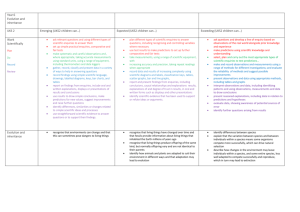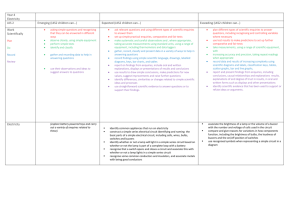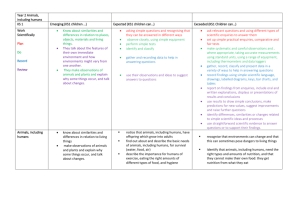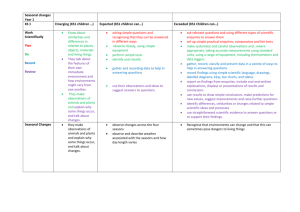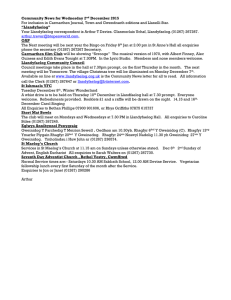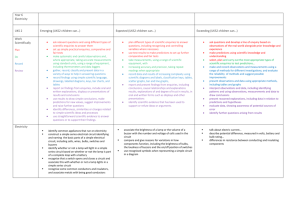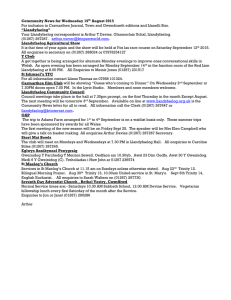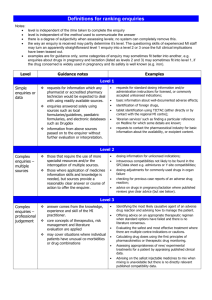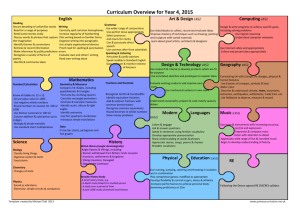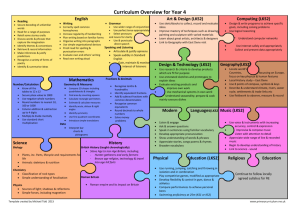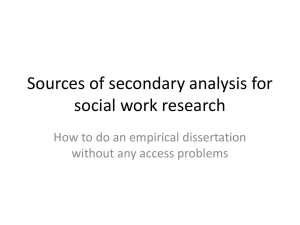Year 3 Animals including humans
advertisement
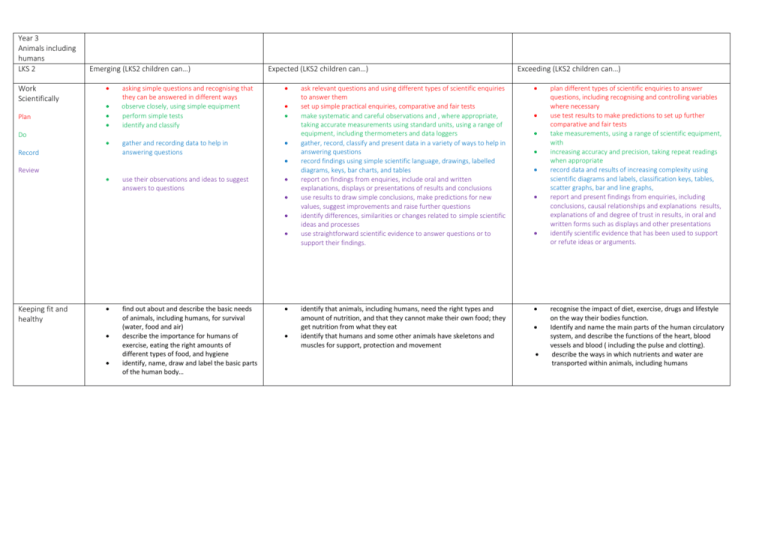
Year 3 Animals including humans LKS 2 Work Scientifically Plan Do Emerging (LKS2 children can…) Record Review Expected (LKS2 children can…) asking simple questions and recognising that they can be answered in different ways observe closely, using simple equipment perform simple tests identify and classify gather and recording data to help in answering questions use their observations and ideas to suggest answers to questions Keeping fit and healthy find out about and describe the basic needs of animals, including humans, for survival (water, food and air) describe the importance for humans of exercise, eating the right amounts of different types of food, and hygiene identify, name, draw and label the basic parts of the human body… Exceeding (LKS2 children can…) ask relevant questions and using different types of scientific enquiries to answer them set up simple practical enquiries, comparative and fair tests make systematic and careful observations and , where appropriate, taking accurate measurements using standard units, using a range of equipment, including thermometers and data loggers gather, record, classify and present data in a variety of ways to help in answering questions record findings using simple scientific language, drawings, labelled diagrams, keys, bar charts, and tables report on findings from enquiries, include oral and written explanations, displays or presentations of results and conclusions use results to draw simple conclusions, make predictions for new values, suggest improvements and raise further questions identify differences, similarities or changes related to simple scientific ideas and processes use straightforward scientific evidence to answer questions or to support their findings. identify that animals, including humans, need the right types and amount of nutrition, and that they cannot make their own food; they get nutrition from what they eat identify that humans and some other animals have skeletons and muscles for support, protection and movement plan different types of scientific enquiries to answer questions, including recognising and controlling variables where necessary use test results to make predictions to set up further comparative and fair tests take measurements, using a range of scientific equipment, with increasing accuracy and precision, taking repeat readings when appropriate record data and results of increasing complexity using scientific diagrams and labels, classification keys, tables, scatter graphs, bar and line graphs, report and present findings from enquiries, including conclusions, causal relationships and explanations results, explanations of and degree of trust in results, in oral and written forms such as displays and other presentations identify scientific evidence that has been used to support or refute ideas or arguments. recognise the impact of diet, exercise, drugs and lifestyle on the way their bodies function. Identify and name the main parts of the human circulatory system, and describe the functions of the heart, blood vessels and blood ( including the pulse and clotting). describe the ways in which nutrients and water are transported within animals, including humans
